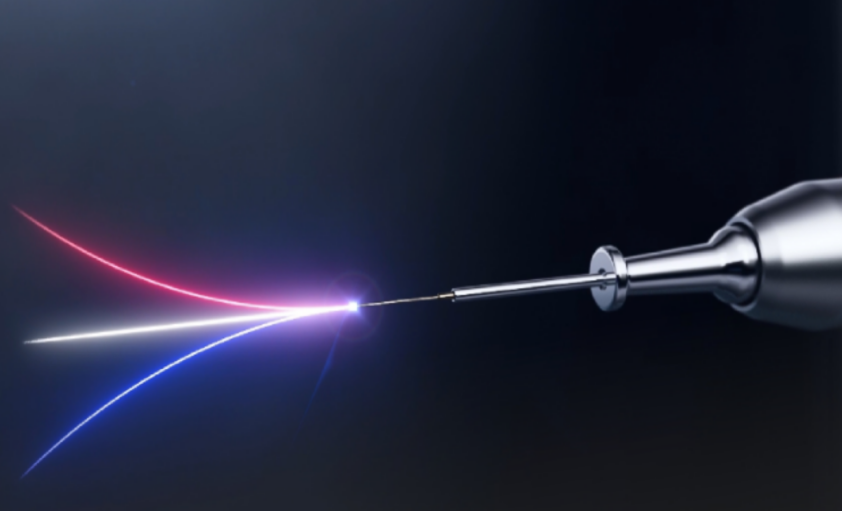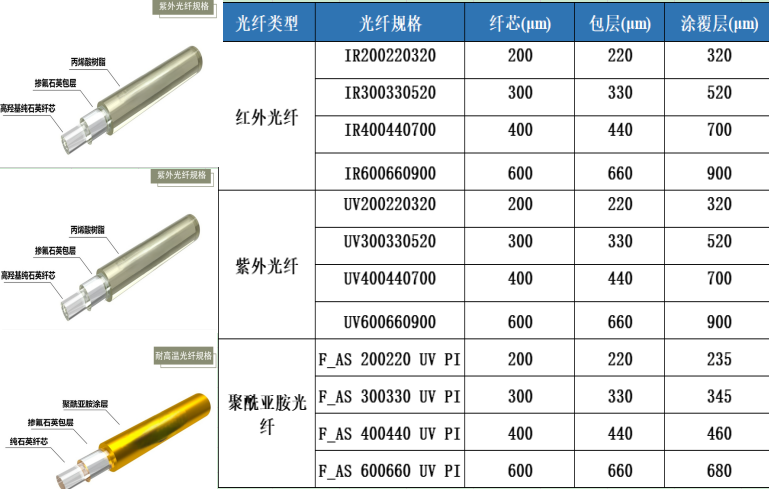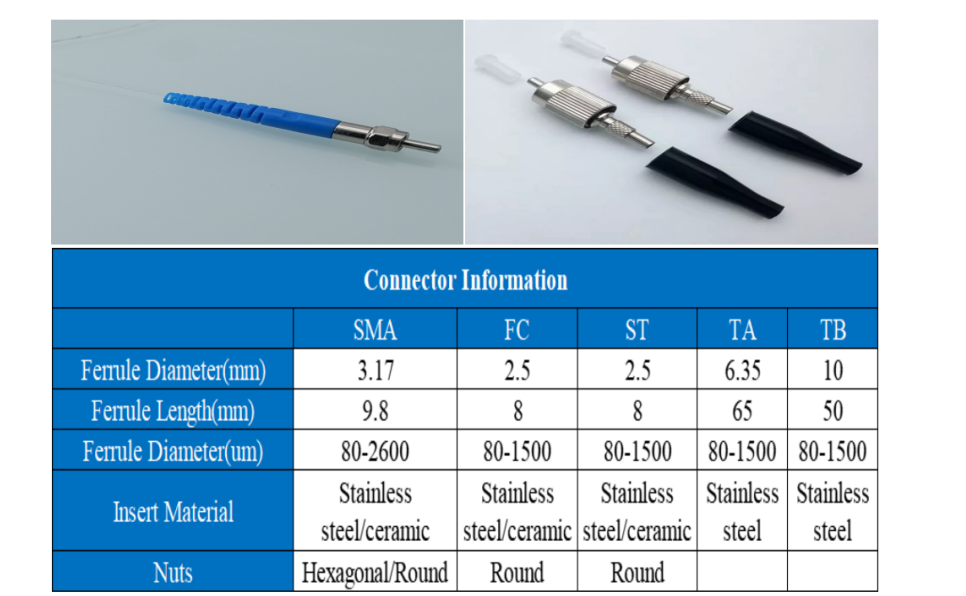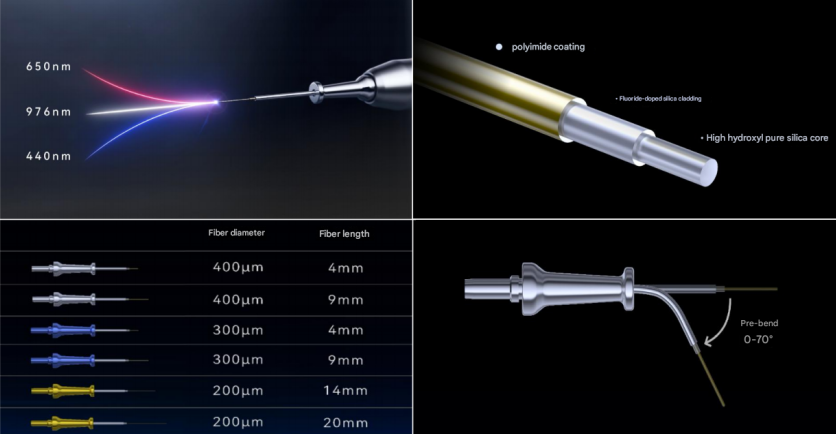
Fiber Optic Application in Dental Care
1. What is Dental Laser Fiber?
Dental laser fiber is a fiber optic device suitable for dental laser treatment, mainly used to transmit laser energy for various dental surgeries and treatments. As a core component in dental laser treatment, dental laser fiber can accurately transmit laser energy and is widely used in a variety of dental diagnosis and treatment scenarios, with significant advantages such as precision, minimally invasive and rapid healing.

2. Core Functions of Dental Fiber
(1) Cutting Function
Technical principle: Use the photothermal effect of high-energy lasers (such as erbium lasers and CO₂ lasers) to precisely vaporize or break up tooth tissue or soft tissue. For hard tissue cutting, erbium lasers (2940nm) are absorbed by water and hydroxyapatite, which is suitable for caries removal and bone trimming; for soft tissue cutting, CO₂ lasers (10600nm) or diode lasers (810-980nm) are used for operations such as gum trimming and frenulum removal. Advantages: minimally invasive, no vibration, and reduced postoperative pain.
(2) Coagulation Function
Technical principle: Laser energy is absorbed by hemoglobin and converted into heat energy, which seals blood vessels and promotes coagulation. Commonly used laser types include diode lasers (810-980nm) and Nd:YAG lasers (1064nm). Application scenarios: hemostasis after tooth extraction, hemostasis during gingival surgery, and disinfection of periodontal pockets. Advantages: rapid hemostasis and reduced risk of infection.
(3) Lighting Function
Technical principle: Flexible optical fiber conducts cold light source (LED or halogen lamp) to provide shadowless, high-brightness lighting. Key scenarios: root canal treatment, hidden caries inspection, surgical field enhancement. Advantages: reduce operation blind spots and improve diagnosis and treatment accuracy.
(4) Diagnostic Function
Technical expansion: Fiber endoscope: check interproximal caries and periodontal pocket depth. Optical coherence tomography (OCT): high-resolution imaging to assist in early caries diagnosis.

3. Application Fields of Dental Laser Fiber
•Soft tissue surgery: used for gum shaping, frenulum removal, etc., with high precision and less bleeding.
•Hard tissue treatment: used for caries removal and root canal treatment, reducing damage to healthy tissue.
•Resin curing: used for light curing of dental composite resins to ensure rapid hardening of the material.
•Optical coherence tomography (OCT): used for high-resolution imaging of teeth and gums, assisting in accurate diagnosis.
•Lighting system:
-Dental headlight/oral mirror: provides shadowless cold light source, reduces shadows in the surgical area, and improves operation accuracy.
-Root canal treatment: high-brightness optical fiber penetrates deep into the root canal to assist in observing fine structures.
•Laser treatment:
-Erbium laser (Er:YAG): used for hard tissue cutting (caries removal, bone trimming), minimally invasive and with little thermal damage.
-Diode laser: suitable for soft tissue surgery (gum trimming, ulcer treatment), tooth whitening and sterilization.
-Nd:YAG laser: used for hemostasis and periodontal pocket disinfection.
• Diagnosis and imaging:
- Fiber optic endoscope: to examine hidden areas (interproximal caries, periodontal pockets).
- Optical coherence tomography: to improve the resolution of imaging and assist in the diagnosis of early caries.

4. Common Dental Laser Fiber Specifications


5. Common Dental Laser Fiber Connector Types


6. Application Example of Dental Optical Fiber - Polyimide Optical Fiber Used in Blue Light Laser Technology
The advantages of 440nm blue laser treatment are soft tissue cutting, hemostasis, gum decolorization, whitening, etc.; the advantages of 976nm near-infrared light (with 650nm red light as the aiming light) treatment are sterilization, physical therapy, desensitization, etc.
The working tip of blue laser technology uses a high-hydroxyl pure quartz core and a fluorine-doped quartz cladding optical fiber, which has higher transmission efficiency. The optical fiber is coated with polyimide, which is resistant to high temperature and has good biocompatibility, enhances toughness, and is not easy to break.
The working tip of the blue laser matches the use of three diameter specifications of 200μm/300μm/400μm and different optical fiber lengths. It can be pre-bent to 0-70⁰ according to clinical needs, suitable for treatment of various angles and positions in the mouth.
The metal structure of the working tip can be sterilized and reused at high temperature and high pressure, and the optical fiber can be disassembled and replaced to improve the efficiency of laser transmission.

Welcome to our company's dental care application solutions.
For further technical knowledge and product information, the contact information is as follows:
Toll Free: 400-160-8187 Email: sales@fiberkinz.com Website: fiberkinz.com